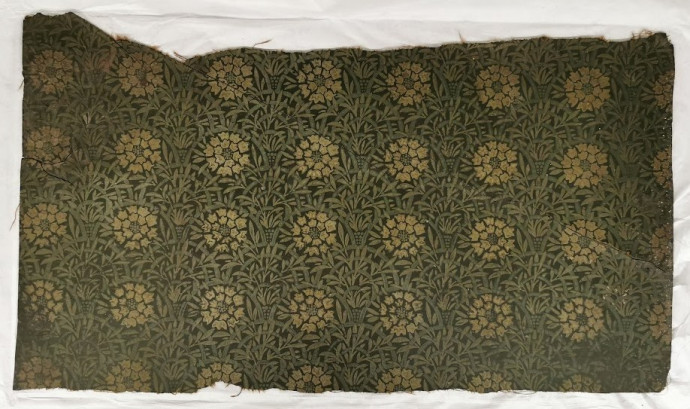This is William Morris’ only design for linoleum, and his very first foray into designing for floor coverings. The design, featuring African marigolds set against an arched trellis, was reproduced in two colourways, although only this green and yellow version is known. The floral pattern closely resembles the ‘Marigold’ design Morris produced for printed textile, which was registered at around the same time.
Linoleum, composed of linseed oil on a canvas backing, was an inexpensive and practical alternative to woven carpets for Victorian households. Morris’s linoleum was extremely popular, in part due to its low price: it cost just 3s. 10d. per square yard, less than a third of the price of the most popular machine-woven carpeting. Morris & Co. almost certainly outsourced the production to Nairns of Kirkcaldy, Scotland, who were the most prolific producers of linoleum at the end of the 19th century. Original examples are relatively rare, owing much to the everyday heavy use of the surface, however another good example, again in yellow and green, can be seen today in situ in the hallway of Emery Walker’s House and museum at 7 Hammersmith Terrace, London.

